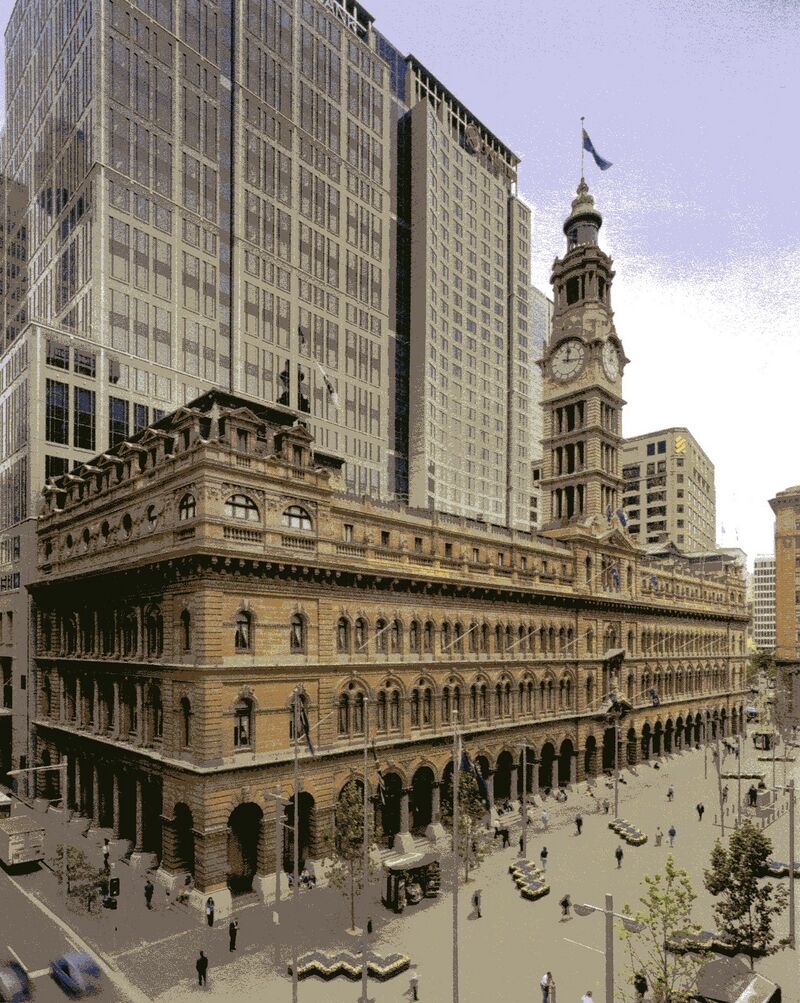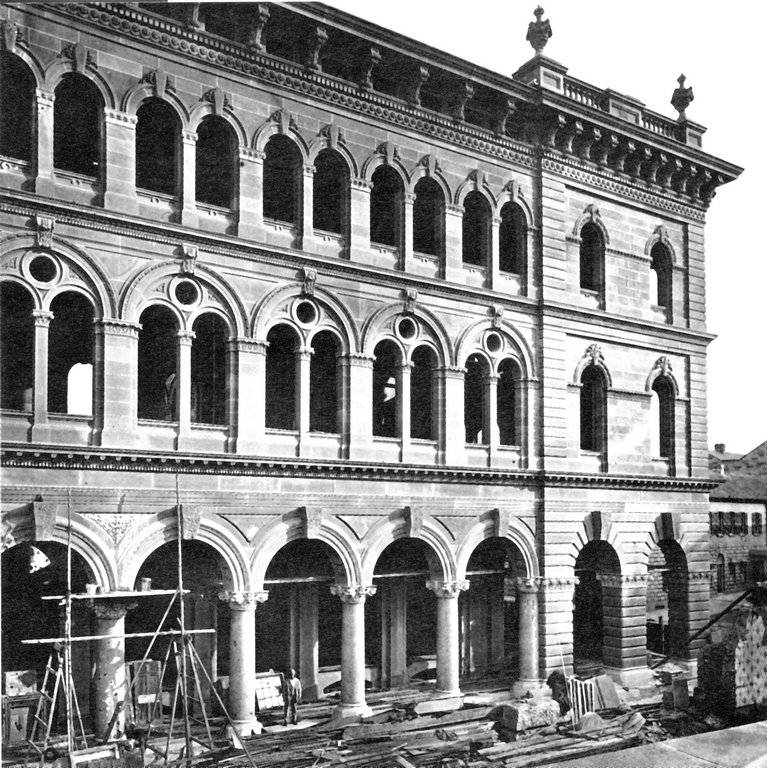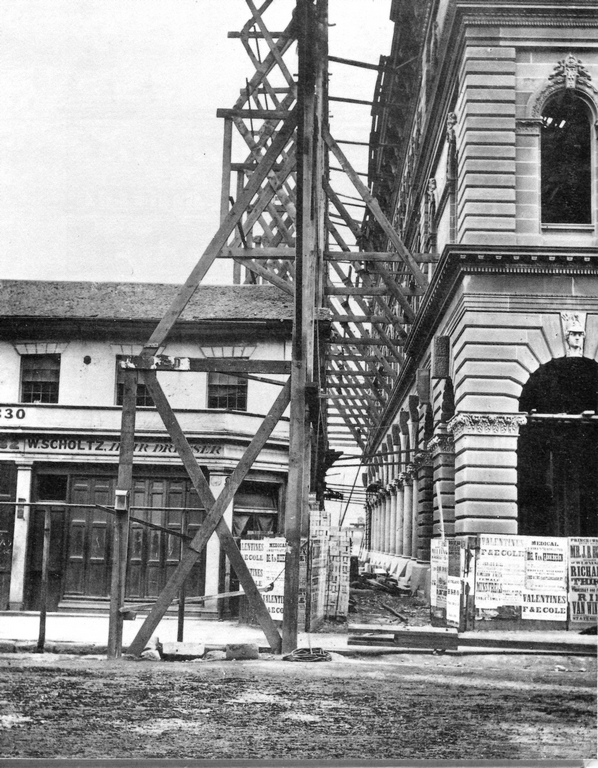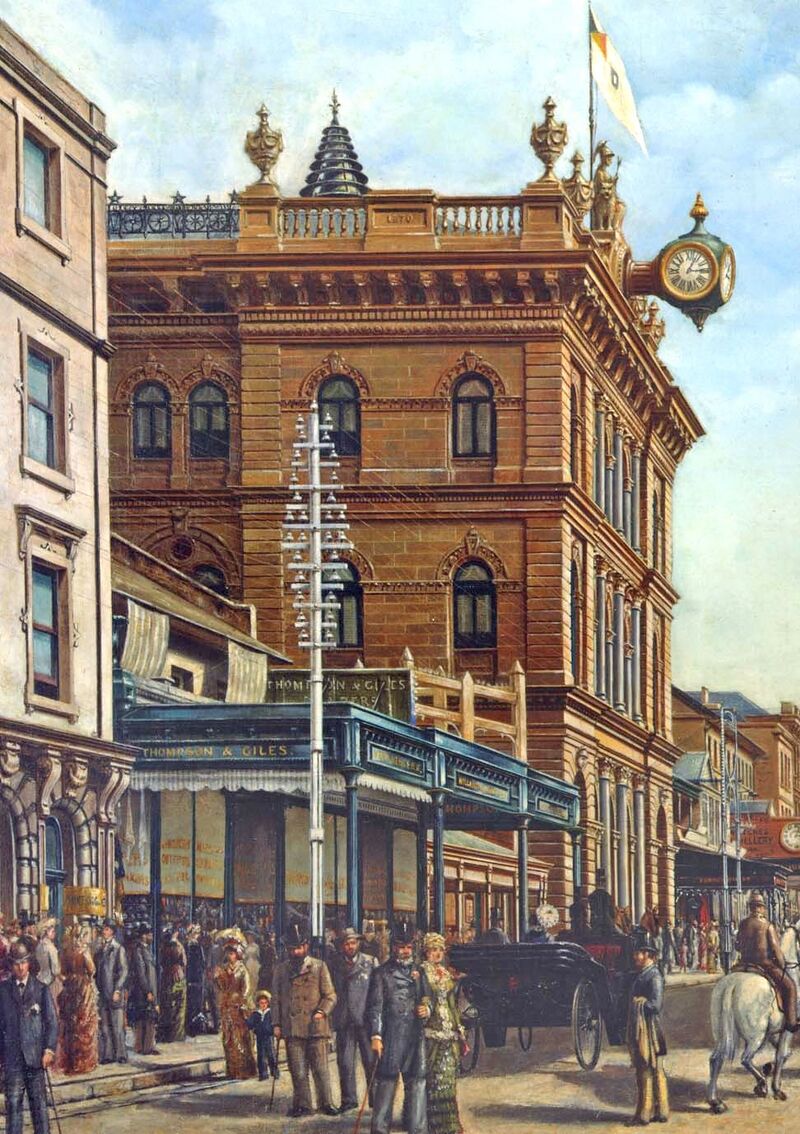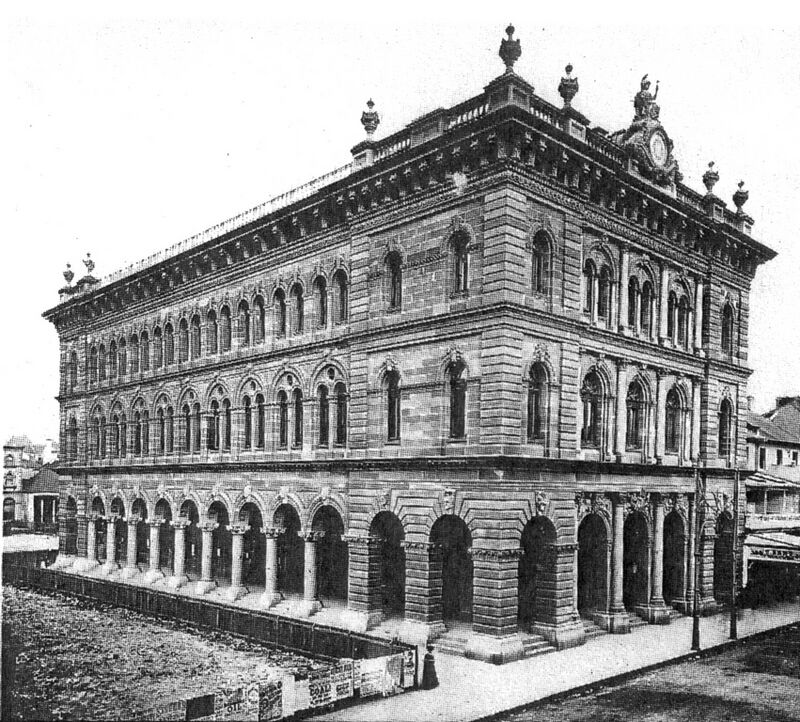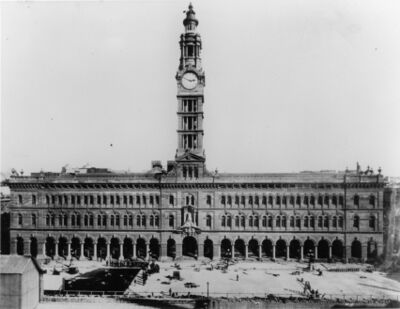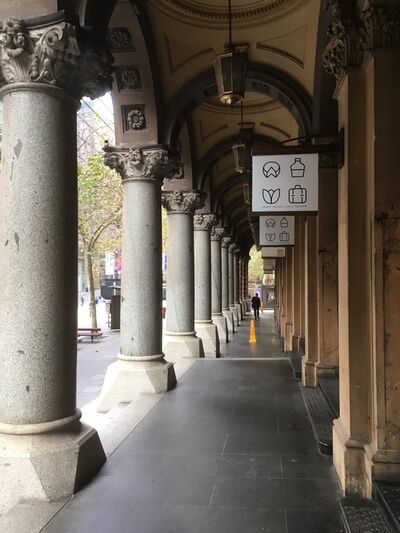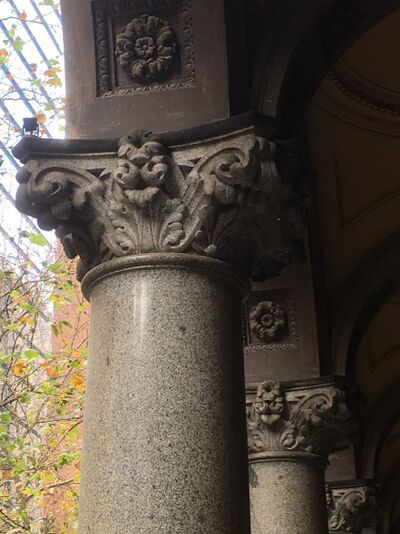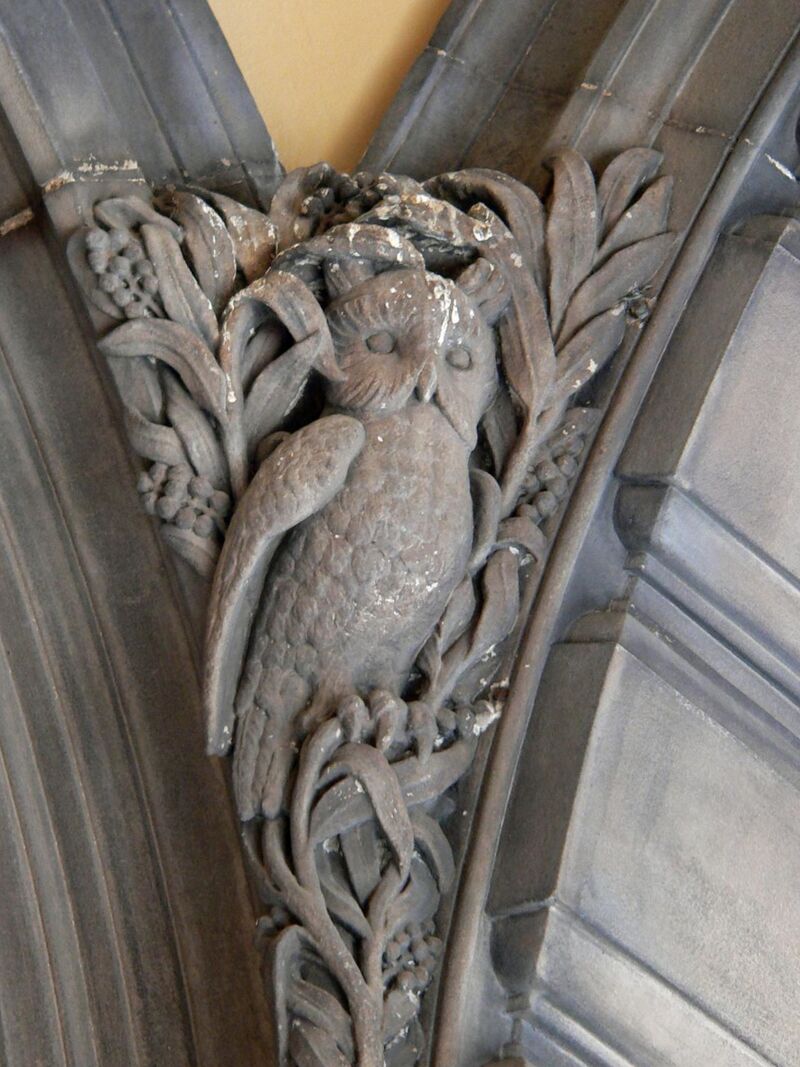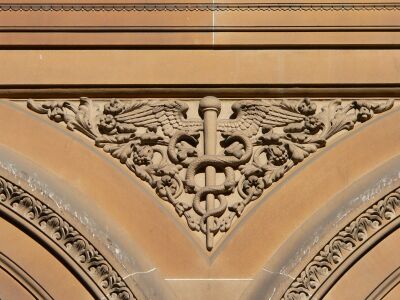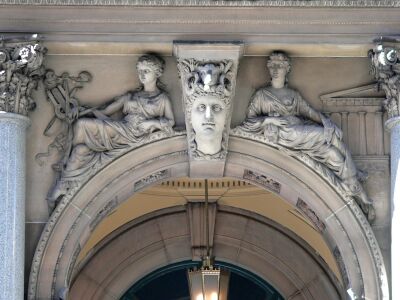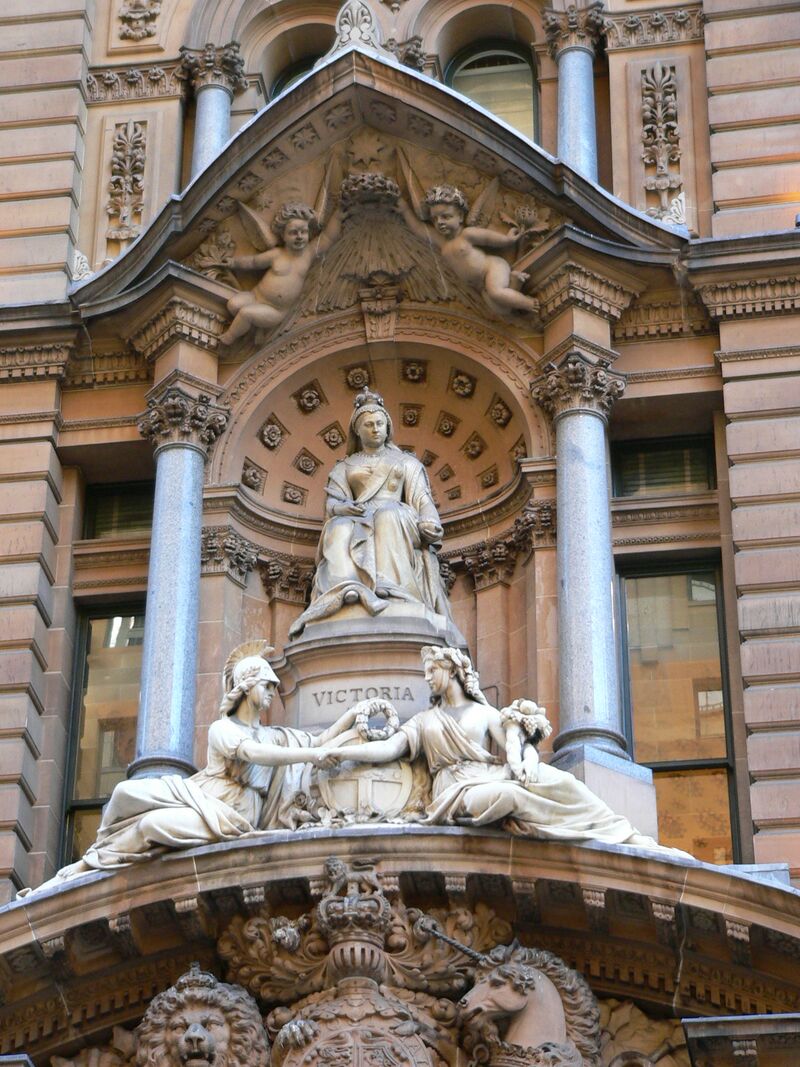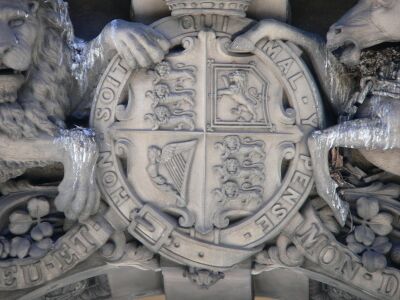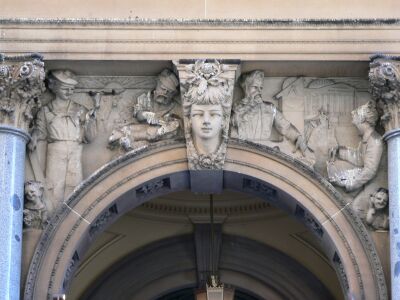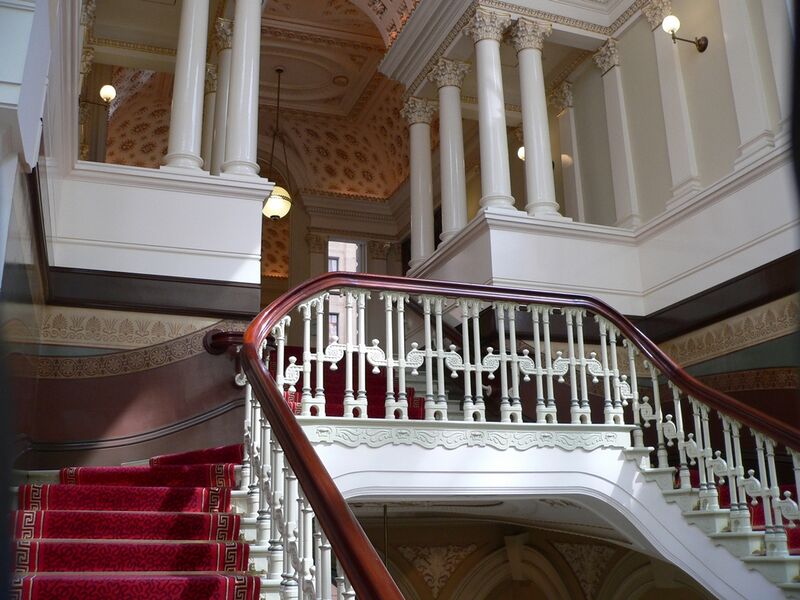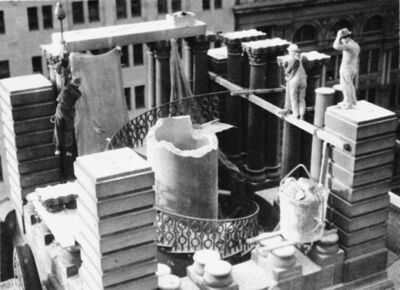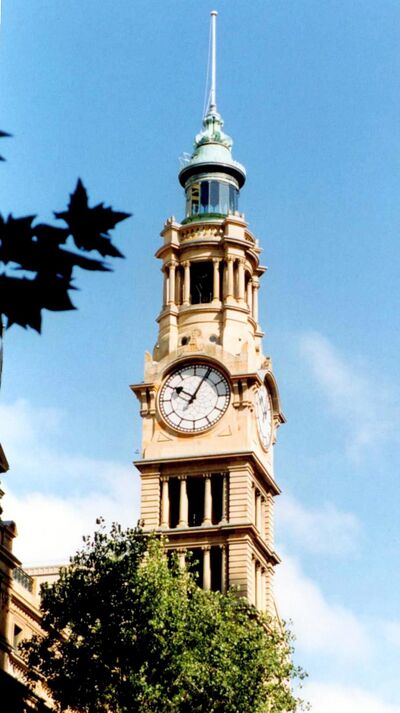General Post Office, Sydney
The General Post Office was designed under James Barnet, Colonial Architect from 1862 to 1890.
It is of Pyrmont sandstone and was built in two stages: Stage 1 extended from George Street mid-way to Pitt Street. It was commenced in 1865 and was completed in 1874 by John Young. When completed in 1874 it faced into the 12 feet (3.6m) wide St. Martin’s Lane and land had to be resumed to enable formation of the first stage of Martin Place.
Stage two extended to Pitt Street. It included the clocktower and was constructed by contractors McCredie Bros; the work was commenced in 1880 and completed in 1887.
The foundations of the GPO span the Tank Stream; a detail of the construction can be seen in the basement.
C. 1898, Walter Liberty Vernon the first Government Architect, made additions to the GPO in the form of mansard roofs at the George and Pitt Street ends, linked with single storied attics behind the main parapet line. And he also extended the George Street front by two bays.
The keystone over the original centre bay on George Street is a single block of sandstone that weighed 27 tons and carries a carving of the British coat of arms. However, the motto has been miss-spelt as the ‘i’ is missing from the ‘Honi’ in ‘ Honi soit qui mal y pense’. Most of the carved figures on the building were done in a classical manner. The keystones of arches on the Martin Place façade show 24 heads representing either a continent, country or state.
In the spandrels of the Pitt Street arches Barnet had Italian sculptor Tomaso Sani sculpt figures of people representing aspects of contemporary colonial life. These caused great controversy and eventually, a Board of Enquiry was held which recommended their removal. Barnet ignored the subsequent instruction and they are still there. On his own initiative, the clock contractor Angelo Tornaghi installed tubular bells instead of the specified conventional bells, causing a dispute with Barnet. The dispute was resolved when Barnet and Tornaghi went into Hyde Park and after listening to the chiming of the Town Hall and GPO clocks, agreed that the tubular bells were inferior. Tornaghi’s contract was cancelled and eventually acceptable bells were installed by Henry Daly.
During World War II the clock tower was dismantled as a safety precaution; it was re-erected in 1964. Then following the Newcastle earthquake in 1989 the tower was found to be vulnerable in an earthquake. The innovative solution devised by consulting engineer Colin Crisp involved boring vertical holes down through the square corner columns and post-tensioning the tower with cables; it was completed in 1991 and has been claimed to be a ‘world first’ in post-tensioning a building.
In 2017 Australia Post sold the freehold over the building to a joint venture between Far East Organisation and Sino Land with an updated heritage management plan included as part of the sale.
Sydney General Post Office location map.
References:
Clarke, Michael, Proposal to Nominate as Item of Engineering Heritage Interest, September 2025.
